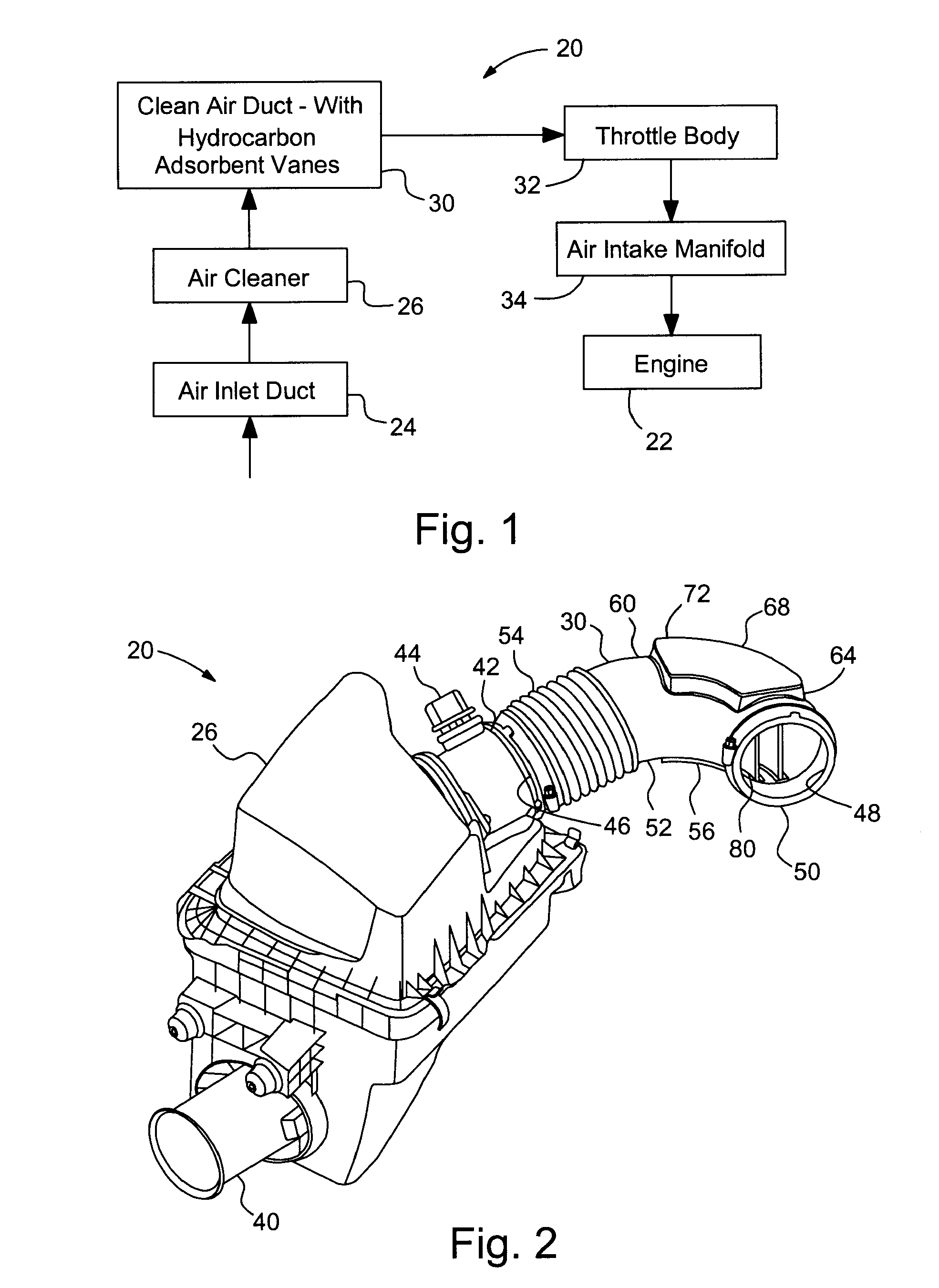Flow turning vane assembly with integrated hydrocarbon adsorbent
a technology of hydrocarbon adsorbent and flow turning vanes, which is applied in the direction of machine/engine, combustion-air/fuel-air treatment, and separation processes, etc., can solve the problems of low adsorption efficiency, low adsorption efficiency, and pressure loss, and achieve low flow restriction (pressure loss), enhance flow performance, and high hydrocarbon trapping capacity
- Summary
- Abstract
- Description
- Claims
- Application Information
AI Technical Summary
Benefits of technology
Problems solved by technology
Method used
Image
Examples
Embodiment Construction
[0024]FIG. 1 shows a block diagram of an air induction system 20 directing air to a vehicle engine 22. The air induction system 20 includes an inlet duct 24 that opens to the atmosphere and directs flow into an air cleaner 26, where the air is filtered. A clean air duct 30 is in fluid communication with an outlet of the air cleaner 26. The clean air duct 30 includes a flow turning vane assembly with hydrocarbon adsorbent vanes, which will be discussed in more detail below. The clean air duct directs air to a throttle body 32 (either directly or through another duct). The throttle body 32 is in fluid communication with an air intake manifold 34. The air intake manifold 34, in turn, directs the air to intake valves (not shown) of the engine 22.
[0025]FIGS. 2-5 illustrate a portion of the air induction system 20 of FIG. 1 in more detail, according to a first embodiment. An inlet 40 directs air into the air cleaner 26, with the air flowing through an air filter (not shown) before flowing...
PUM
| Property | Measurement | Unit |
|---|---|---|
| perimeter | aaaaa | aaaaa |
| flexible | aaaaa | aaaaa |
| size | aaaaa | aaaaa |
Abstract
Description
Claims
Application Information
 Login to View More
Login to View More - R&D
- Intellectual Property
- Life Sciences
- Materials
- Tech Scout
- Unparalleled Data Quality
- Higher Quality Content
- 60% Fewer Hallucinations
Browse by: Latest US Patents, China's latest patents, Technical Efficacy Thesaurus, Application Domain, Technology Topic, Popular Technical Reports.
© 2025 PatSnap. All rights reserved.Legal|Privacy policy|Modern Slavery Act Transparency Statement|Sitemap|About US| Contact US: help@patsnap.com



